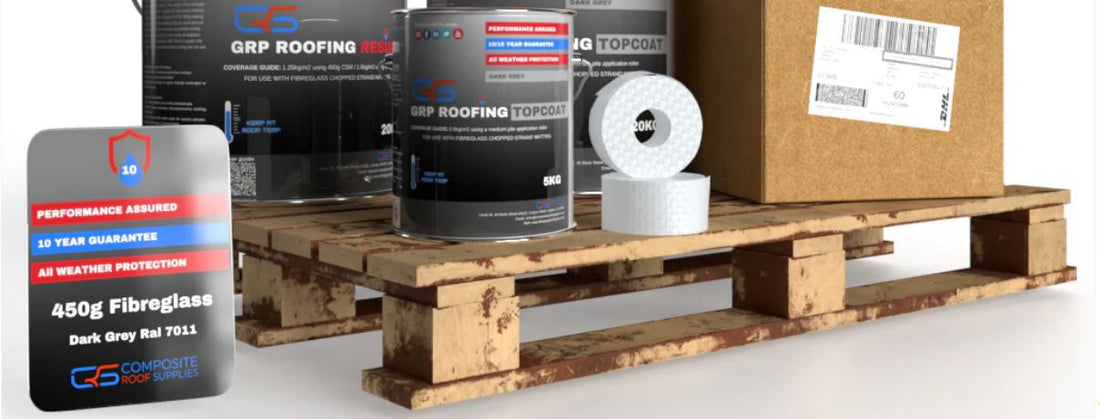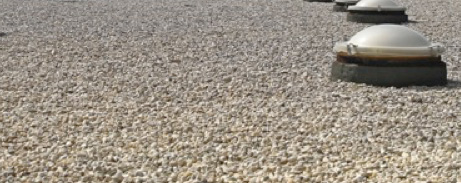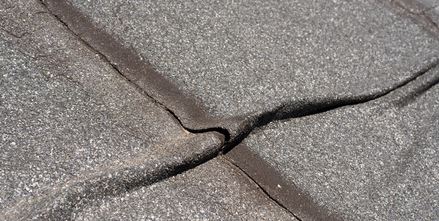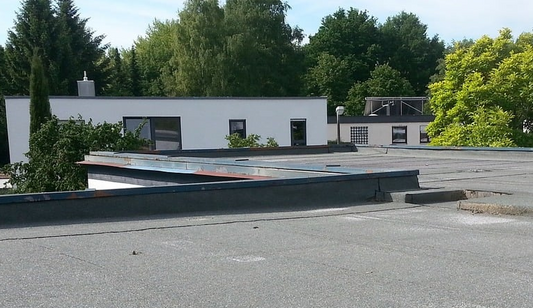Introduction
If you're looking for a durable, long-lasting solution for your flat roof, a GRP (Glass Reinforced Polyester) fibreglass roof kit might be just what you need. GRP fibreglass roofing is a popular choice for both residential and commercial properties due to its excellent waterproofing capabilities, strength, and resistance to weathering. In this comprehensive guide, we'll cover everything you need to know about GRP fibreglass flat roof kits, from components to installation and maintenance.
Components of a GRP Fibreglass Roof Kit
A typical GRP fibreglass roof kit includes the following components:
- Chopped Strand Matting (CSM): Available in 450g/m2 and 600g/m2 options, CSM forms the reinforcement layer of the GRP roof.
- Polyester Resin: The resin binds the fibreglass matting together and is available in standard or 100% pure formulations.
- Roofing Topcoat: The topcoat provides UV protection and comes in standard, fire retardant, or pigmented options.
- Catalyst/Hardener: This component initiates the curing process of the resin.
- Fibreglass Bandage: Used for sealing edges and trims.
Note: Roofing Edge Trims are usually not included, so will need to be purchased separately. Various trim options are available to suit different roof configurations.
Costs of GRP Roof Kits
Costs will vary depending on which brand and the thickness of matting you opt for. For example, an average size garage, using 450g/m2 matting, could cost around £225 for a complete kit.
To go for the more durable 600g/m2 matting, costs would rise to around £320/m2.
For something like a kitchen extension, that might typically be 20 M2, you would want the 600g matting, and this would cost around £400 -£500.
Advantages of GRP Fibreglass Flat roof Kits
GRP can be a complicated material, with many different components. Opting for a kit to suit the size of your roof, enables you to get exactly the right materials you need for your project, without spending time calculating the materials needed.
This is ideal if you only have one project to complete, and won't be using leftover materials on the next one.
Preparing the Roof Deck
Before installing a GRP fibreglass roof, it's crucial to ensure that the underlying timber structure is sound and properly prepared. Use 18mm OSB3 tongue and groove decking boards for the best results.
If using 8' x 4' plain OSB3 boards, leave a 3-4mm expansion gap between them. Securely fix the decking boards to the joists, ensuring a stable base for the GRP roofing system.
Installing GRP Fibreglass Roofing
- Begin by selecting and installing the appropriate roofing edge trims for your roof.
- Apply the polyester resin to the roof deck, followed by the chopped strand matting. Ensure that the matting is thoroughly wetted out with the resin.
- Consolidate the resin and matting layers using a paddle roller to remove any air bubbles and ensure proper bonding.
- Apply the roofing topcoat, making sure to achieve an even coverage across the entire roof surface.
- Allow the GRP roofing system to cure according to the manufacturer's guidelines, taking into account ambient temperature and humidity conditions.
Rounding Up
GRP fibreglass flat roof kits offer a comprehensive, value for money solution for creating a durable, waterproof, and long-lasting roof.
By understanding the components, preparation, and installation process, you can ensure that your GRP fibreglass roof provides excellent performance for years to come. Remember to follow the manufacturer's guidelines and carry out regular maintenance to maximize the lifespan of your roof.
Frequently Asked Questions (FAQs)
What are the differences between the various fibreglass roofing kit ranges?
Different kit ranges may offer varying grades of materials, such as higher-quality resins or reinforcement mats. Some kits may also include additional components or accessories.
How much catalyst/hardener should be used?
The amount of catalyst/hardener required depends on the specific product and the ambient temperature. Always follow the manufacturer's guidelines for the best results.
Can the topcoat be applied on a different day without compromising waterproofing?
It's generally recommended to apply the topcoat within 24 hours of laying the fibreglass matting and resin layers. If left longer, the surface may need to be abraded before applying the topcoat to ensure proper adhesion.
Is a GRP fibreglass roof better than felt?
GRP fibreglass roofs offer superior durability, strength, and waterproofing compared to traditional felt roofs. They are also more resistant to UV damage and can last up to 30 years or more with proper maintenance.
Can you walk on a GRP fibreglass roof?
Yes, GRP fibreglass roofs are designed to be walk-on surfaces, making them ideal for roof terraces or balconies. However, it's essential to use appropriate footwear and avoid dropping sharp objects on the roof to prevent damage.
How long will a GRP fibreglass roof last?
With proper installation and maintenance, a GRP fibreglass roof can last 30 years or more, making it a cost-effective long-term roofing solution.
Can a GRP roof be repaired if damaged?
Yes, GRP fibreglass roofs can be easily repaired if damaged. Small cracks or holes can be filled with a suitable repair kit, while larger areas may require patching with fibreglass matting and resin.




